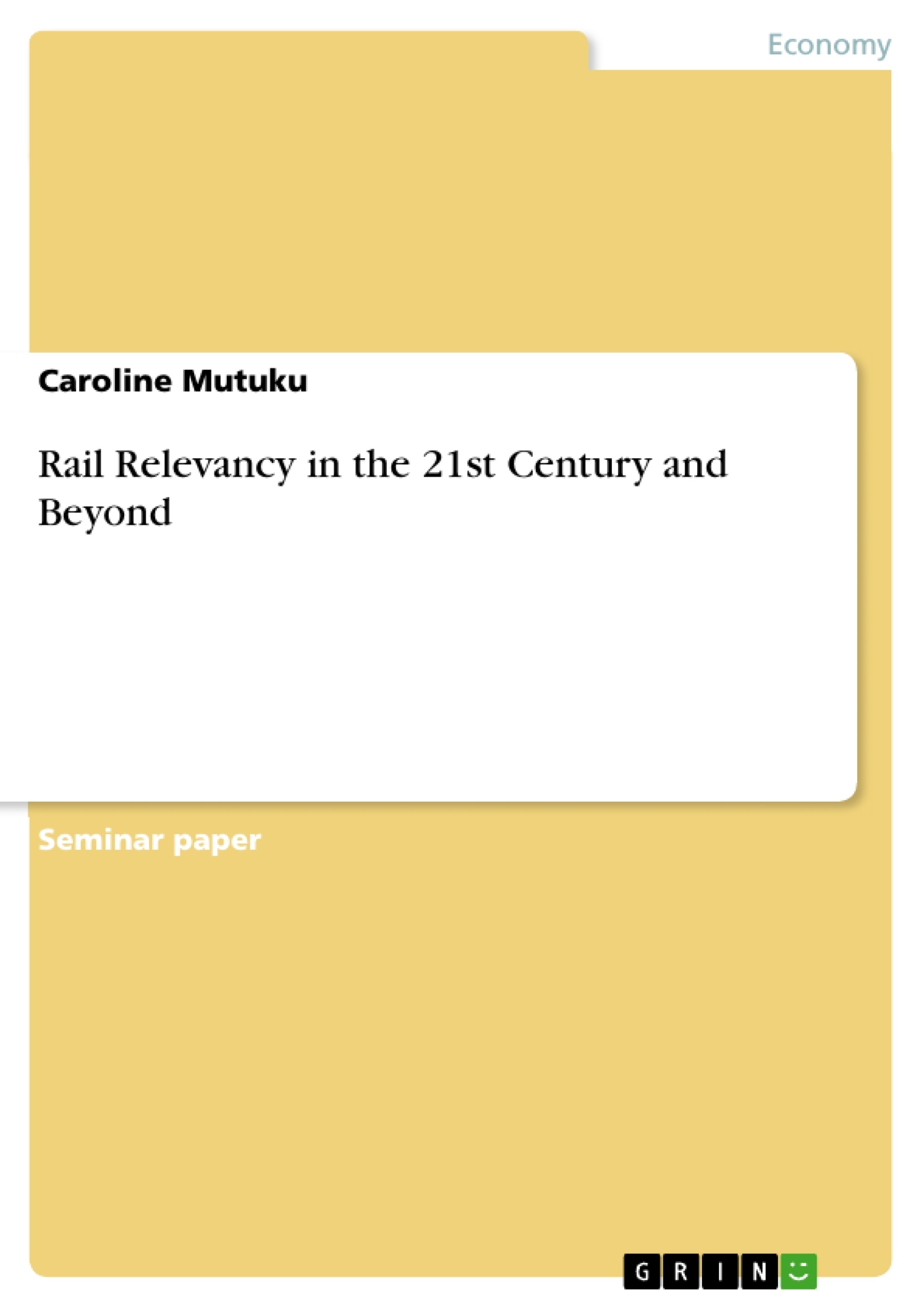Information, goods, and people are moving too fast in this competitive 21st century. In 2005 alone, more than 9.7 billion trips were made through public means. Today, travelers are offered different and competing modes of transportation. The competitive nature of the industry results in the modernization and expansion of every part of the system (APTA, 2007). Rail transport is not left behind.
The Mohawk and Hudson Railroad in New York opened in 1831 as the US first railroad. The objective of the railroad was to supplement Erie Canal travel that runs from Schenectady to Albany. The railroad brought to the nation transport means that had never been seen before. It carried everything from passengers to mail to livestock to many corners of the country. Since then, the United States has seen almost 800 different rail companies blossoming 70 defunct resulting on the question of the sustainability and relevancy of railway in the 21st century.
Rail Relevancy in the 21st Century and Beyond
Information, goods, and people are moving too fast in this competitive 21st century. In 2005 alone, more than 9.7 billion trips were made through public means. Today, travelers are offered different and competing modes of transportation. The competitive nature of the industry results in the modernization and expansion of every part of the system (APTA, 2007). Rail transport is not left behind.
The Mohawk and Hudson Railroad in New York opened in 1831 as the US first railroad. The objective of the railroad was to supplement Erie Canal travel that runs from Schenectady to Albany. The railroad brought to the nation transport means that had never been seen before. It carried everything from passengers to mail to livestock to many corners of the country. Since then, the United States has seen almost 800 different rail companies blossoming 70 defunct resulting on the question of the sustainability and relevancy of railway in the 21st century.
Critiques against the expansion of railroad have argued that it requires a massive investment of capital. The construction cost overhead expenses and maintenance are too high in comparison to other transport modes. It is such costly nature of the operation that contributed towards the insolvency of some of the railway companies. Besides, railroad investments are more immobile and particular. In areas with insufficient traffic, the investment would be a huge wastage of resources. Railroads have also been disregarded in the first moving century of their inflexibility. Unlike the road and air transport, it’s hard to en-route railways as required by the circumstances (Olievschi, 2013). Moreover, it is also argued that rail transportation fails in providing door to door service tied to specific tracks. Even when it is possible to have a door to door delivery, the loading and offloading of freight is cumbersome and takes a lot of time. Another issue highlighted against the development of rail in the 21st century is that it is uneconomical for small traffic and short distances (Olievschi, 2013).
The above limitations are more pronounced on the traditional railroad and do not appreciate the integration of rail routes from one company to another. Despite the setback, the 21st sustainable mobility agenda makes railways as an efficient mode of transport compared to roads and air. In the long distance transportation such as inter-state or inter-city, the use of rails has more advantage over other transport modes. Moreover, there are a lot of sustainability aspects in the rail transport. In fact, due to its appeal to travelers, the demand for rail transport in this fast moving century is more compared to the 19th and 20th century (Givoni & Banister, 2008). The increasing demand provides a positive future for the closely existing railroads.
With the understanding of the role of rail transport in the economy, traditional rail systems have been uplifted through grants and the building of new urban systems. Today, it has become tough to differentiate between conventional railways, commuter, and rapid transit systems. For instance, the Washington, D.C and San Francisco regional rapid rail systems are much more similar to the rapid transit rail systems operating in urban cores. In addition, out of the downtown areas, the new system looks like the commuter rail lines for their long distance extension into the suburbs (Thompson and Matoff, n.d.). The present version of the rail system applies the street railways technology version in their operation. The system operates more in the city centers that have been decongested from automobile travels as well as in the suburbs through a private right of way extensions. Another feature that will increase the operability of the US rail companies is the park-and-ride concept. The concept has exceedingly grown indicating it’s the geographical expansivity and the adaptability of the rail systems in the 21st century (Thompson and Matoff, n.d.).
[...]
- Arbeit zitieren
- Caroline Mutuku (Autor:in), 2018, Rail Relevancy in the 21st Century and Beyond, München, GRIN Verlag, https://www.grin.com/document/430700
-

-

-

-
Laden Sie Ihre eigenen Arbeiten hoch! Geld verdienen und iPhone X gewinnen. -

-
Laden Sie Ihre eigenen Arbeiten hoch! Geld verdienen und iPhone X gewinnen. -

-
Laden Sie Ihre eigenen Arbeiten hoch! Geld verdienen und iPhone X gewinnen. -

-
Laden Sie Ihre eigenen Arbeiten hoch! Geld verdienen und iPhone X gewinnen. -

-
Laden Sie Ihre eigenen Arbeiten hoch! Geld verdienen und iPhone X gewinnen.

